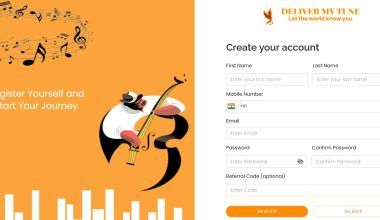If you’re an aspiring artist, getting your music out to the world is a top priority. Thankfully, with digital platforms like iTunes, Spotify, Amazon Music, and more, sharing your tracks with a global audience has never been easier. But how do you actually distribute your track on iTunes and multiple platforms? Don’t worry; this guide will walk you through everything step by step.
Why Distributing Your Track Matters
Making great music is only part of the journey. If no one can listen to it, your hard work might go unnoticed. Distributing your track on iTunes and multiple platforms ensures that your music reaches listeners across different devices and regions. Whether you’re an independent artist or working with a label, distribution plays a crucial role in building your fan base.
Choosing the Right Music Distributor
To distribute your track on iTunes and multiple platforms, you’ll need a music distributor. These services help you upload your music, ensure it meets platform requirements, and manage royalties. Some popular distributors include:
- Delivermytune: Easy to use and offers worldwide distribution.
- DistroKid: Affordable and fast with unlimited uploads.
- CD Baby: A popular choice with additional marketing tools.
- AWAL: Great for independent artists looking for growth.
- LANDR: Combines distribution with mastering services.
Each of these services has its pros and cons, so choose one that fits your needs and budget.
Preparing Your Track for Distribution
Before you distribute your track on iTunes and other platforms, make sure your music is ready. This includes:
- Quality Audio Files: Ensure your track is professionally mixed and mastered.
- Correct Metadata: Add details like track title, artist name, genre, and release date.
- Cover Art: Create an eye-catching album cover that meets platform specifications.
- ISRC Codes: Unique identifiers for your tracks to track sales and streams.
Taking the time to prepare your music properly can make a big difference in how it’s received by listeners.
Uploading Your Music
Once you’re ready, log in to your chosen distributor’s platform and start the upload process. You’ll need to:
- Select the platforms where you want your track to appear (iTunes, Spotify, etc.).
- Upload your audio files in the correct format (usually WAV or FLAC).
- Add metadata, including songwriter credits and copyright information.
- Choose a release date and pricing options.
After submission, your track will go through a review process before it goes live.
Setting the Right Release Strategy
Simply uploading your track isn’t enough. To get the most out of your music, consider a release strategy that includes:
- Pre-Save Campaigns: Encourage fans to pre-save your track on platforms like Spotify.
- Social Media Teasers: Build excitement by sharing snippets on Instagram or TikTok.
- Press Outreach: Send your music to blogs and influencers for coverage.
- Playlist Submissions: Submit your track to popular playlists to boost visibility.
A well-planned release can help you gain more traction and reach a wider audience.
Promoting Your Track After Distribution
Once your track is live, it’s time to spread the word. Here are a few promotion ideas:
- Social Media Marketing: Regularly post updates, behind-the-scenes content, and engage with fans.
- Music Videos: A visual element can attract more listeners.
- Email Newsletters: Keep your fans informed about upcoming releases and events.
- Collaborations: Work with other artists to reach new audiences.
Promotion is an ongoing effort, so stay consistent and creative.
Tracking Your Performance
After distributing your track on iTunes and other platforms, monitor its performance using analytics tools provided by your distributor. Key metrics to track include:
- Number of streams and downloads
- Audience demographics
- Revenue generated
- Popularity on different platforms
Analyzing these insights will help you refine your marketing strategy and plan future releases.
Monetizing Your Music
Distributing your track is also an opportunity to earn income. Some ways to make money from your music include:
- Streaming Revenue: Platforms like Apple Music and Spotify pay per stream.
- Digital Sales: Selling tracks on platforms like iTunes.
- Merchandise Bundles: Offer your track along with merchandise items.
- Sync Licensing: Get your music featured in films, commercials, or video games.
Exploring multiple revenue streams can help you sustain your music career.
Common Mistakes to Avoid
When you distribute your track on iTunes and multiple platforms, avoid these common pitfalls:
- Poor Audio Quality: Ensure your music is professionally mixed and mastered.
- Inaccurate Metadata: Double-check your song details to avoid confusion.
- Neglecting Promotion: Simply uploading your track isn’t enough; marketing is key.
- Ignoring Audience Engagement: Stay connected with your fans and respond to their feedback.
Learning from these mistakes can save you time and effort in the long run.
Final Thoughts
Distributing your track on iTunes and multiple platforms is an exciting step in your music career. With the right preparation, a solid release strategy, and consistent promotion, you can maximize your reach and make a lasting impression on your audience. Whether you’re just starting out or looking to expand your reach, taking the time to distribute your music properly will pay off in the long run.
Now that you know how to distribute your track on iTunes and multiple platforms, it’s time to take action and share your music with the world!
Related Articles:
For further reading, explore these related articles:
For additional resources on music marketing and distribution, visit DMT RECORDS PRIVATE LIMITED.






